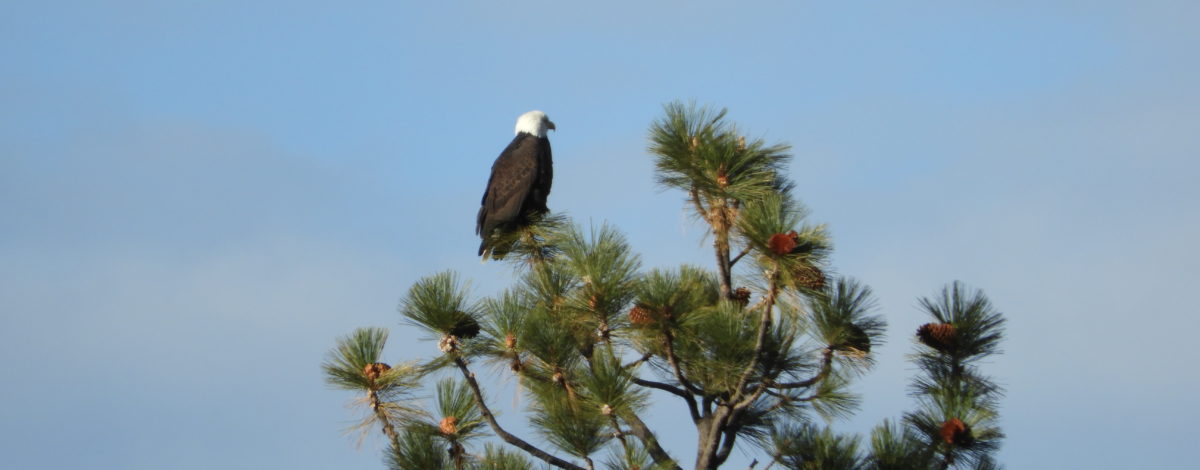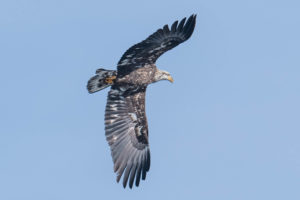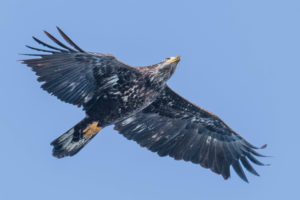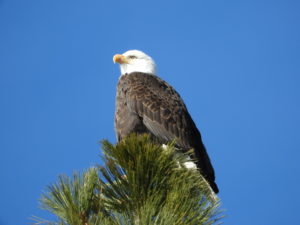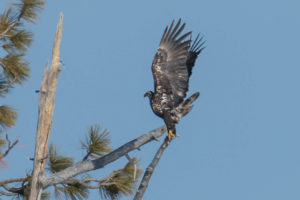Annual Count Finds 24 Bald Eagles Around Lake Tahoe
This year we tallied a total of 24 Bald Eagles. Thanks to your careful and descriptive data collection, we were able to differentiate 17 individual adults and 7 immatures.
Bald Eagles were sighted in areas throughout the whole lake, and many were found flying around, in comparison to the 2019 survey where the eagles were perched for the majority of the survey.
Every year is different. Weather conditions, how much snow is in the trees, and prescribed burns can impact eagle detection rates. Since the beginning of the survey at Tahoe (in 1979) we have seen a fairly steady, increasing trend up until a few years ago. Since 2014, tallies have usually been in the low 20s, with one year spiking to 27, and last year dipping to 19. As we hover around this recent average, we question if the carrying capacity of Lake Tahoe can provide for ~23 eagles.
Another trend is that the eagles that spend the first half of winter at Tahoe are heading down to Carson Valley (to feed on the afterbirth of cows and scavenge dead calves) earlier each year. This may be a result of climate change, but calving season, and the exodus of many of Tahoe’s eagles, has definitely been shifting forward in the calendar year.
The Tahoe Institute for Natural Science sends a huge thank you to all of the 90 volunteers who came out to our Annual Bald Eagle Count!! This event couldn’t be possible without you!
Upcoming Events
We have many opportunities for you to get outside and learn with us. If you are interested in the “raptor theme”, we will be leading a Carson Valley raptor outing on January 7. Additionally in February, we will be leading 3 snowshoes tours, a star gazing outing, and have a few presentations at the local REIs. If you are interested in participating in an event, please click here.
Become a TINS Member
Additionally, we would like to thank Bald Eagle Count participants who are already TINS members. By becoming a member, you will help TINS achieve its mission of advancing the natural history, conservation, and ecosystem knowledge of the Tahoe region, through science, education, and outreach.
We believe that this, in turn, helps foster active and improved care, understanding, and stewardship of the Tahoe region from individuals, communities, and land managers, ultimately making Tahoe a better place for us all, including future generations. Also, membership dues are tax-deductible.
Click here for membership information.

